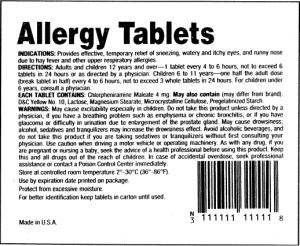
Photo courtesy of Barnes & Nobles.
Compare the following over-the-counter drug labels that have the same content in different formats:

Photos courtesy of Plain Language.
The bottom label is undoubtedly the easier one to read and understand because the author used “plain language,” or “clear Government communication that the public can understand and use” (PlainLanguage). In addition, they used different modalities, such as bold lettering, various font sizes, bullet points, and effective use of space (despite how small the backsides of medicine are).
ENGFISH: HOW WOULD YOU DEFINE IT?
The mistake that most students make, including me, is the tendency to use too many words in order to sound scholarly. In fact, Ken Macrorie creates a word for it, Engfish, in his article “The Poisoned Fish.” My definition of Engfish is that it is a wordy weapon inflicted on students to sound smart. Macrorie suggests that textbooks are responsible for the ways that students write and that redundancy and unnecessary words are the underlying issues. To fix these issues, we should use plain language.
MY PERSONAL EXAMPLE: CAN YOU RELATE?
In my personal life, I found that I cannot speak to my mother in ways that I can speak to my brother. For example, when I text my mother, I have to be considerate of the words I use and how to construct them into sentences that are easy for her to understand and that do not require any further explanation. However, the texts I send my brother contain more complex words, implications, and other language that would be a burden to my mother in everyday conversation. The difference is in their education levels. My mother has no college degree, but my brother has a master’s degree. Forty percent of Americans have a college degree, which means we need to accommodate our writings for the other 60 percent without a college education by using plain language. Is this always possible?
STEM FIELDS AND PLAIN LANGUAGE: LIKE OIL AND WATER?
I think that STEM (science, technology, engineering, and mathematics) courses intimidate and discourage people from investing their education in those fields. Applying plain language principles to make them less intimidating is difficult because STEM fields contain jargon associated with their specialized subjects. Yes, every field has its set of jargon, but STEM jargon is not easily (or accurately) defined in a dictionary or understood by the average person.
TECHNICAL COMMUNICATION AND PLAIN LANGUAGE
Similarly, technical communicators need to use plain language because it is intimidating not to do so. However, unlike STEM fields, it is an easier field to apply plain language principles. Technical communicators often already use tables to organize information and use pictures as examples—think of our Writer Designer booklet, and now imagine it without the tables and pictures. Plain language is very effective under these circumstances.
PLAIN LANGUAGE: WHAT IS THE RISK?
The biggest risk of plain language is unwanted results from the lack of information. For example, in a previous technical communications class, I had to write a recipe for Swiss chard rolls. It was a fairly long recipe, and I found it too intimidating for the average cook, so I got carried away with the “backspace” button and eliminated important steps in the process. For instance, the cook had to take out the rib of the leaves so that it was pliable and easier to roll, but I did not explain how to do that. Likewise, the cook had to dry the Swiss chard leaves after blanching them, but I never specified the best technique to dry them. Therefore, many users ended up with soggy rolls that kept falling apart.
EVALUATE YOUR AUDIENCE CAREFULLY:
IT’S NOT YOU, IT’S ME.
Also, my target audience was current vegetarians, so I assumed they knew certain ingredients, such as tempeh. However, most of the vegetarians in my user-testing were at various levels; some just started as vegetarians and some were veterans of the diet. I learned that I had to evaluate my audience further, so this led me to believe that I was solely responsible for making sure my audience knew everything from different cooking equipment to the difference between shredded cheese and grated cheese. I created a quick checklist for evaluating the audience based on information provided by the Center for Plain Language:
- List the different levels of education of the audience
- List what people want to know
- Anticipate what readers already know and what they need to know to complete the task
- Use words the audience knows
- List characteristics of the groups that should influence design
SERVICE LEARNING AND PLAIN LANGUAGE:
HOW DOES YOUR PROJECT RELATE?
Lastly, I think it is worth noting how this topic relates to our service learning project. I would relate plain language to it in a couple of ways. For instance, my group’s project focuses on creating an annual report and newsletter templates. The audience for both of these projects will be the donors of Our House. Annual reports have more formal and scholarly tones compared to newsletters. Therefore, we have to maintain some level of academic writing. However, we have to keep in mind that our projects are not limited to the current donors. Potential donors have access as well, which puts us in a position to aim for plain language.
Sources Cited
Center for Plain Language.
http://centerforplainlanguage.org/5-steps-to-plain-language/
PBS News Hour. http://www.pbs.org/newshour/rundown/percentage-americans-college-degrees-rises-paying-degrees-tops-financial-challenges/
Plain Language.
http://www.plainlanguage.gov/plLaw/index.cfm
